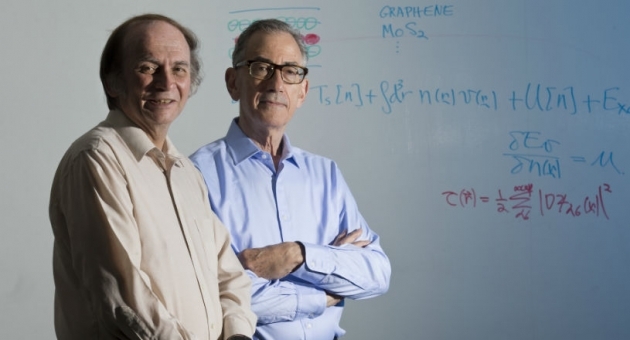New Temple center to focus on energy applications

Temple’s College of Science and Technology will be the new home of an Energy Frontier Research Center focusing on the design of new layered materials that will have potential use in energy applications.
Temple’s new Center for the Computational Design of Functional Layered Materials is one of 10 new Energy Frontier Research Centers announced recently by the U.S. Department of Energy, which awarded a total of $100 million to 32 of such centers nationwide.
As world demand for energy rapidly expands, transforming the way energy is generated, supplied, transmitted, stored and used will be among the critical challenges facing the United States in the 21st century. To more quickly advance technologies that have potential to meet these growing energy needs, the Department of Energy created the Energy Frontier Research Centers to support basic research that will lay the scientific groundwork to address future critical needs in energy production, storage and use.
Temple’s center, which is being funded through a four-year, $12 million DOE award, will be led by John Perdew, Laura H. Carnell Professor of Physics and Chemistry, and includes 19 principal investigators, 10 of whom are from Temple. External collaborators will include Rice University, Duke University, Princeton University, Drexel University, Northeastern University, North Carolina State University, the University of Pennsylvania, Brookhaven National Laboratory and the Jawahalal Nehru Center for Advanced Scientific Research in Bangalore India.
Perdew said the center will attempt to design new layered materials that could potentially have useful applications in energy production or storage.
“The interesting thing about the single layers of materials is you can very readily change them and control the properties of that material,” said Perdew. “For instance, you could tune it to absorb a particular frequency or frequencies of light for conversion into electricity. These are things that are of interest to the Department of Energy.”
Perdew said the center’s theoretical or computational scientists will use computer simulations to add various atoms or molecules to a particular material’s surface or change the material’s structure and then compute whether those changes affect the material’s properties in a desired way to create a new material. Experimental scientists working at the center would then grow these new materials and test their applications, he added.
In addition to Perdew, Temple researchers involved in the center include Physics Professor Xiaoxing Xi, Associate Physics Professor Maria Iavarone, Assistant Physics Professor Xifan Wu, Assistant Physics Professor Adrienn Ruzsinszky, Research Assistant Physics Professor Jianwei Sun, College of Science and Technology Dean and Chemistry Professor Michael L. Klein, Chemistry Professor Eric Borguet, Chemistry Professor Daniel Strongin and Chemistry Assistant Professor Michael Zdilla.
“There were more than 200 Energy Frontier Research Center proposals to the Department of Energy, and the fact that Temple is one of only 10 newly funded centers validates the university’s recent investments in materials science faculty and facilities, especially the new Science Education and Research Center,” said Klein, a co-principal investigator in Center for the Computational Design of Functional Layered Materials. “This demonstrates the remarkable research expertise in CST and puts Temple on the map as a top player in science and technology.”